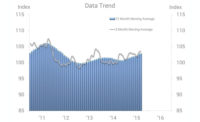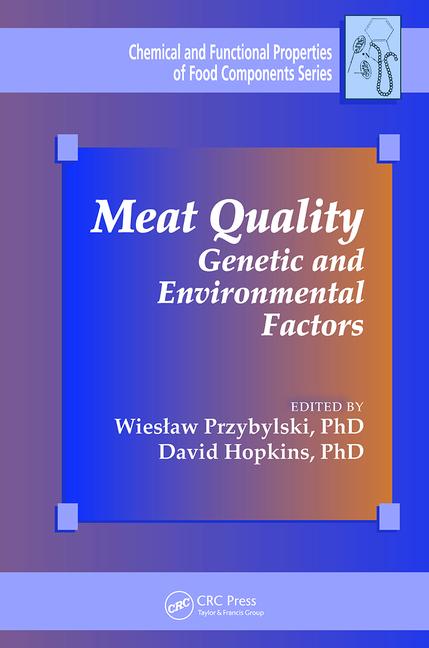Slaughter operations: Under watchful eyes

With remote video auditing (RVA) systems, employee performance can be viewed randomly throughout the day, ensuring that proper food-safety and animal-welfare procedures are followed at meat- and poultry-processing plants.
Only around commercially since 2008, RVA is gaining widespread acceptance now amongst processors as another tool in the battle against E. coli during slaughter processing operations.
The numbers don’t lie. Since JBS SA, one of the world’s largest beef processors, initiated its RVA program in 2010, the amount of E. coli found by its inspectors decreased by 60 percent.
Meat processors Cargill and OSI Group also have launched RVA programs in the past couple years. In 2008, Cargill launched its first video auditing pilot at its Fresno, Calif., plant.
“Cargill uses third-party remote video auditing (RVA) for animal-welfare auditing at all 10 North American beef harvest facilities, with pilot projects slated for our pork and turkey businesses,” says Michael Martin, director of communications, Cargill Inc., based in Minneapolis. “This provides unbiased audits and allows us to share information about our animal-welfare policy compliance and performance with customers seeking that information.”
This August, the Food Safety & Inspection Service (FSIS) issued “Compliance Guidelines for Use of Video or Other Electronic Monitoring or Recording Equipment in Federally Inspected Establishments,” which established that using RVA systems is still voluntary, and FSIS agents will continue to inspect plants in person rather than via camera footage.
Auditing the auditors
An RVA system works by sending video from the inside of a plant over a secure Web link to a third-party auditing center, which conducts animal-welfare audits at random times during the day, according to the American Meat Institute Animal Care and Handling Guidelines. After each audit, feedback is quickly offered to the plant managers so they can monitor and improve their employees’ performance.
A second type of RVA that is used mainly in livestock production facilities relies on motion detection to flag events for review by third-party auditors.
“These systems are useful for applications where limited animal handling takes place,” says Kurt D. Vogel, Ph.D., assistant professor of animal science livestock welfare and behavior, University of Wisconsin-River Falls. “Examples would include sow gestation operations and broiler houses.”
In essence, RVA allows a plant to verify that animal handlers are following the animal-handling program in their facility. A major advantage of RVA is that the plant does not know when an audit is in progress during the day, but managers receive feedback on their performance on the audits that are conducted nearly in real-time.
“This allows management to respond quickly to animal-handling issues in the plant, and it allows the plant to develop a culture that rewards good animal handling by collecting unbiased data and then using the data to reward excellent livestock handlers,” says Vogel.
In fact, plant managers are, in some cases, seeing employees respond to this system with some lively competition.
“It was fascinating [at our Animal Care & Handling Conference] to hear the impact it has on human nature,” says Janet Riley, senior vice president of public affairs, American Meat Institute, based in Washington, D.C. “We heard about shift one and two in the same plant, for example, competing with one another to improve performance and ‘beat’ the other shift.”
Improving interactive training
According to Leonard Huskey, head of animal welfare for JBS, it was important for JBS to be able to use RVA as a tool to train and provide feedback to employees as a part of its ongoing interactive training strategies, while showing the importance of animal welfare or food safety tasks as detailed in its Slaughter Actions for Excellence (SAFE) program.
“The camera system gives us the opportunity to perform an unbiased audit of key tasks,” notes Sherri Jenkins, food safety director for JBS, based in Greeley, Colo. “We want to be sure that we are carrying out these critical parts of our operations as effectively as possible.”
In the spring of 2010, JBS’ Souderton, Pa., plant was the first to install cameras for a 100-day pilot. A total of 16 RVA cameras were set up in the animal-welfare and food-safety areas, from the receiving of the cattle to after stunning and all along the slaughter line to monitor that animal handling is done properly, avoiding stress to the livestock, and to help assure that cross-contamination is avoided during the hide removal process, Huskey says.
The images were then sent to a digital video recorder that was accessed by the vendor, as well as JBS plant managers and corporate office.
After the cameras were first installed, “we realized that some of our employees were at 100 percent compliance, while a few employees were at considerably less than average compliance levels,” he says. “Once we gave feedback to our employees, the non-compliant employees quickly moved up to high levels of compliance. Importantly, we’ve been able to sustain these improvements and see further incremental improvements.”
The RVA images are recorded on a continuous loop and saved for no more than a few days before being erased with new images. Any review with employees would normally take place within the same work shift.
Pleased with its results, JBS then moved to implement approximately 25 to 30 cameras in its seven other beef slaughter and processing plants in 2011 ahead of the E. coli “hot season” (April to September), Huskey says, which it achieved by mid-May.
Dealing with the elements
Adding RVA to plant facilities requires a substantial investment, which not all processors can afford.
“A challenge I see is adapting RVA technology to fit the needs of smaller processors that may find the current systems difficult to afford,” notes Vogel.
To add RVA to facilities, processors pay for high-tech cameras and their pressurized housings (which are filled with nitrogen to prevent moisture from entering the cameras), electrical contractors to add conduit for cable and fiber for the network in order to capture images and send them to the DVR.
Also, processors pay for ongoing maintenance of the system and fees associated with the vendor’s third-party auditing program, Huskey says.
“Proper installation is key,” he says. “As we’ve gone through this process, we’ve learned that it’s important to fully protect the cable, fiber and connections from moisture getting into the housing. We also work with our sanitation contractor so they avoid contact of high-pressure water with the camera housings.”
Indeed, one of the challenges that processors face with any video-recording technology in slaughter plants is the environment in which the cameras are located.
“The environment in slaughter plants includes rapid and extreme changes in temperature, humidity and vibration — a deadly combination for many surveillance cameras,” says Vogel. “We will have to continue to work to improve the durability of the cameras that we install in these environments.”
| U.S. industry and slaughter automation |
|
During a brief sit-down interview at Process Expo with Andy Hanacek, editor-in-chief of The National Provisioner, Vincent Volpe, president of Jarvis Products Corp., offered these key insights on the incorporation of automation and robotics into slaughter operations. Robotics technology has improved, setting up a perfect combination of factors that should drive the industry into robotics and automation at a quicker pace moving forward. “Americans always love high speeds — the more you put through the line, the better the overhead,” Volpe says. “And when the American meatpackers traveled to Europe, they discovered that running [a little slower] wasn’t so bad in that it was easier on the equipment.” Volpe believes the U.S. market should continue along this path as meatpackers move toward a more deliberate pace of operations, based on food-safety and inspection demands as well. “If you put two machines on the line processing 800 carcasses an hour, and if you have two lines, you can get to 1,600, versus the 1,100 that the USDA approved originally,” he adds. “Furthermore, USDA says if you get 800 on a line, they can inspect that more easily than we can 1,100 on a line.” |
Looking for a reprint of this article?
From high-res PDFs to custom plaques, order your copy today!








